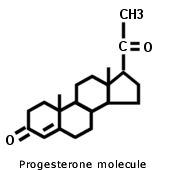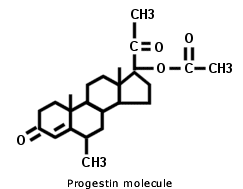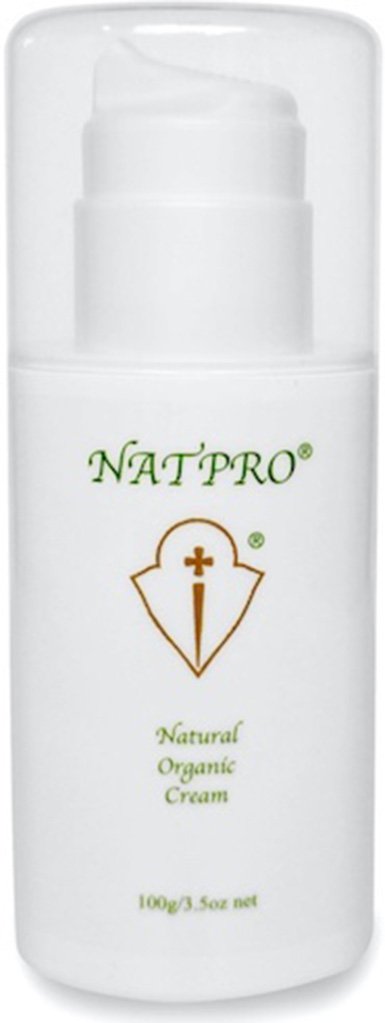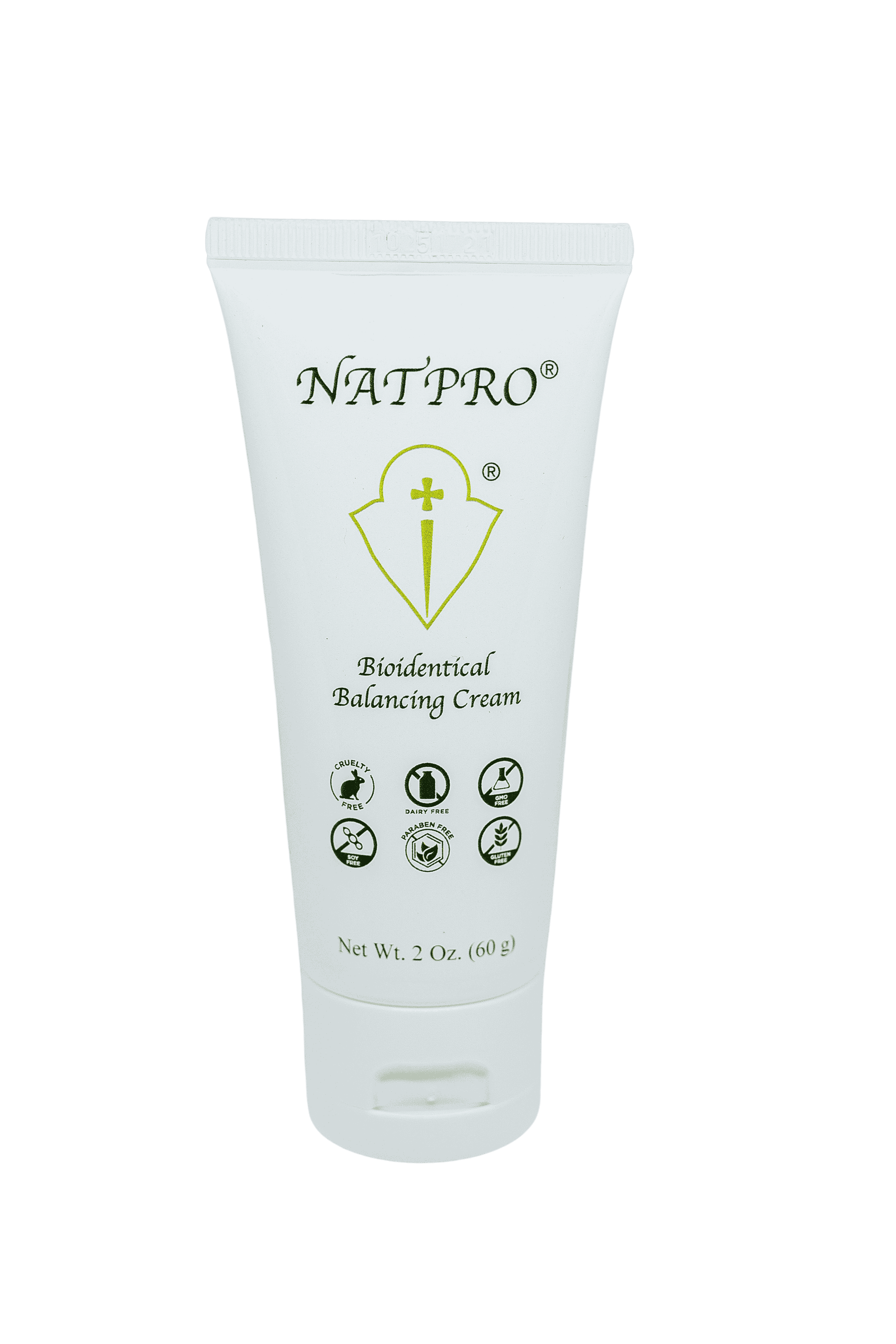What is progesterone?
Natural progesterone can provide a safe, convenient remedy for a wide range of health problems.
This website has one aim...
"to provide you with clear, jargon free information to enable you to make informed decisions about the benefits of progesterone therapy as they may relate to your particular health problem"
There are just as many misconceptions held about this critically important hormone by the medical professions as there are by the rest of us. This may seem like an overly bold assertion but it is based upon years of personal experience.
The number of times I've heard statements such as...
"its only a female sex hormone"
or...
"its just another sex hormone"
or (worst of all)...
"the only difference between progesterone and progestin is the spelling"
...are too numerous to detail.
This is not meant as a condemnation of medical practioners in general (they're a busy bunch and its a specialised subject) but just as a caution that you should not accept all you hear about this fundamental hormone at face value.
However, you've come to the right place for real answers.
This video by Dr. Elise Schroeder, "talks about the difference between progesterone and progestins, terms which are often used interchangeably by mistake"....
Some of what follows may be a bit dry in places but please persist as the big picture that emerges is well worth the effort.
What's the "big picture"? Simply this...
Many of the so-called "modern" diseases can be
prevented or overcome by progesterone therapy.
Much of the evidence for this is anecdotal which helps to explain the reluctance of some medicos to recognise results.
The real question is not...
"does the evidence conform to the rules?"
But...
"do I feel better?"
If the answer is "yes" and the process in getting there is simple, safe and natural then you can add your "anecdote" to the weight of real evidence.
Now lets answer that question...
"What is it?"
First of all its a hormone that has been around for about 500 million years. That makes it the oldest hormone.
Why is this important?
Because it shows how vital it is to the lives of a great many creatures on the planet.
It is essential to all vertebrates... fishes, reptiles, birds and mammals... including humans.
It has countless functions in both sexes and all ages... regulating blood sugar, developing intelligence, building bones, brain activity and many more.
Our bodies make it all the time.
This vital hormone plays a major role in the body. It is not exclusively a female hormone nor is it a 'sex' hormone. It plays no part in the secondary sexual characteristics which develop at puberty. It is the precursor to the sex hormones oestrogen and testosterone.
It is secreted primarily by the ovaries in females and the testes in men. Smaller amounts are produced by the adrenal glands, the brain and glial cells in both sexes.
There are no great quantitative differences between men and women (at least outside the luteal phase).
William Allen and George Corner first isolated 'Progestational Steroidal Ketone' (these are the words that fully describe the hormone and which are the source of its commonly used name) in 1934 and proposed the name because of its "progestational" activity in the pregnant female. This was an unfortunate choice of name as it has now come to be regarded as a 'female' sex hormone, and it's many other roles having been largely forgotten.
It was not until 1943 that Russell Marker made progesterone from the plant steroid diosgenin. Originally he used the Mexican wild yam (dioscorea villosa) as a source plant. However, diosgenin has now been found in many other plants, including the spice fenugreek and the soya bean.
Once it was established that it could be produced like this biochemists began converting it into other hormones. These include cortisone, testosterone, estrogen and of course the unnatural 'progestins' or 'progestogens' that masquerade as the real, natural hormone.
There is much confusion in the minds of both the public and the professions between progesterone on the one hand, and the progestins or progestogens and "yam extracts" on the other.
Let me clear the confusion for you.
Progesterone is made in your body from cholesterol. Here are the essentials of the process...
- first, your body turns the cholesterol into pregnenolone
- pregnenolone is then converted to progesterone
- your body then makes a cascade of other hormones that it needs from the progesterone (these include the estrogens and testosterone amongst others)
See this document for added clarity... Steroidgenesis Pathway
This is the vital point to understand...
"progesterone is an essential raw material from which your
body makes many of the other hormones vital for good health"
It's this simple fact that helps anyone appreciate just how wide ranging the effects of a deficiency can be.
This is why progesterone therapy can be effective in treating such a wide range of health problems, from...
- post natal psychosis, to
- traumatic brain injury (TBI)
- myopathy
- peripheral neuropathy
- pregnancy problems such as miscarriages and pre-term births
- cancer
- sleep
- anxiety and stress
- Hot Flushes
- neuro-degeneration
- PCOS
- benign prostate hyperplasia
- 'man boobs'
- acne
- endometriosis fibroids
- peri-menopause
- menopause
- miscarriage
- candida
- migraines
...and many more.
The "natural" hormone your body makes has a unique molecular structure. Here's what it looks like...

The synthetic progestins and progestogens on the other hand have an altered molecular structure. Here's what they look like...

Spot the difference? They may look similar to the real thing... just as ivy and spinach are both green and leafy (ivy quiche anyone?).
Need more proof? Take a look at these...

Not much difference to look at either, but...
- estradiol tells your body its female
- testosterone tells your body its male
There aren't many clearer differences than that!
The lesson here is obvious enough... if such small differences in molecular structures have such vast effects then... beware of man made alterations.
"Many synthetic drugs are made patentable simply by changing a few atoms of the natural substance. This may sound harmless enough, but the addition or subtraction of a few atoms of a molecule can make a big difference in their effects on the body. This holds especially true with hormones. Tiny amounts can create major effects on the body. For example, the molecular difference between testosterone and estradiol (a form of estrogen) is one hydrogen atom and a couple of double bonds. Amazing! Adding or subtracting one hydrogen atom at a specific place on a molecule can make the difference between a man and a woman!"
- Lee, John R., M.D. and Virginia Hopkins: What your doctor may not tell you about menopause : the breakthrough book on natural hormone balance; Warner Books 2004.
The fact is progestins behave in the body in radically different ways to progesterone itself. The only similarity between progestins and the natural hormone is their ability to maintain the endometrium (the lining of the uterus).
This also means they can be patented and sold for exorbitant prices.
The natural hormone has no toxic side effects. However, the progestins and progestogens are potentially highly toxic because of their altered molecular structure. Some of the known side effects are...
- an increased risk of abortion and congenital abnormalities if taken by pregnant women
- fluid retention
- epilepsy
- migraine
- asthma
- cardiac and renal dysfunction
- depression
- breast tenderness
- nausea
- insomnia
- cancer
- a drop in progesterone levels
...and many more.
The long term effect of the synthetic progestins on adrenal, hepatic, ovarian and uterine function is unknown.
And now for "yam extracts" and "yam creams"... simply put...
"these do not contain progesterone"
They do contain the plant steroid diosgenin, but the body cannot convert diosgenin into the hormone itself. The yam creams can have a beneficial 'adaptogenic' effect on the body but, unlike the hormone itself, they cannot correct hormonal imbalances such as excessive levels of estrogen.
The key message in answering the headline question is simply this...
"Natural" progesterone... just as your body makes it, is a unique substance with unique properties that cannot be faked and that is essential to good health and...
...to life itself.
To learn more about this essential substance and its therapeutic benefits please follow the links in the menu. You can also type in a search term in the search bar at the top of the page to retrieve a list of Progesterone Therapy site pages related to your topic .
Please also complete the free questionnaire... you'll find it top right of this page.
If your interest is more technical or research oriented then please ...click here to find some rather condensed information on the effects of progesterone in the human body.
I trust you will be excited by the science!
To hear my own personal story... the one that led me to set up this website please click here.

PS...
Have you benefited from progesterone therapy?
Click here to tell your story
or see what others have been saying.
References
Progesterone: History, facts, and artifacts; Gian CarloDi Renzo, ValentinaTosto, ValentinaTsibizova:
Best Practice & Research Clinical Obstetrics & Gynaecology, Volume 69, November 2020, Pages 2-12
"Progesterone is the oldest hormone that we know about.
There is huge confusion in the scientific literature about natural progesterone, progestagens, gestagens, progestogens, and progestins.
The term progesterone should only be referred to the natural hormone produced by the ovaries or included in a registered drug, qualified as “body identical” or “bioidentical” and different from custom-compounded bioidentical hormones."
"Progesterone and its related molecules are a crucial tool in modern clinical practice, particularly in the fields of reproductive medicine. Its history is old, but still under development. Presently, the pharmacokinetic and pharmacodynamic profiles of progesterone is well-known and knowledge on natural progesterone (P4) and other molecules with progestational activity, namely progestogens or gestagens, are improved and their interest is still alive. Topics of great and current interest are progesterone and its role in assisted reproductive protocols, threatened and recurrent pregnancy loss, threatened preterm birth with favorable results on pregnancy, and perinatal outcomes. Moreover, progesterone provides several other positive effects on women's health. This paper describes the main chronological steps that characterized the history of progesterone, where scientific research and clinical practice are arrived and WHICH are the future perspectives on this hormone with a “never-ending history.”"
Gian Carlo Di Renzo, Valentina Tosto, Valentina Tsibizova, Progesterone: History, facts, and artifacts,
Best Practice & Research Clinical Obstetrics & Gynaecology, Volume 69, 2020, Pages 2-12,
ISSN 1521-6934, https://doi.org/10.1016/j.bpobgyn.2020.07.012.
Progesterone as a bone-trophic hormone; J. C Prior:
Endocrine Reviews, 1990 May;11(2):386-98. doi: 10.1210/edrv-11-2-386
"Experimental, epidemiological, and clinical data indicate that progesterone is active in bone metabolism. Progesterone appears to act directly on bone by engaging an osteoblast receptor or indirectly through competition for a glucocorticoid osteoblast receptor. Progesterone seems to promote bone formation and/or increase bone turnover. It is possible, through estrogen-stimulated increased progesterone binding to the osteoblast receptor, that progesterone plays a role in the coupling of bone resorption with bone formation. A model of the interdependent actions of progesterone and estrogen on appropriately-"ready" cells in each bone multicellular unit can be tied into the integrated secretions of these hormones within the ovulatory cycle. Figure 5 is an illustration of this concept. It shows the phases of the bone remodeling cycle in parallel with temporal changes in gonadal steroids across a stylized ovulatory cycle. Increasing estrogen production before ovulation may reverse the resorption occurring in a "sensitive" bone multicellular unit while gonadal steroid levels are low at the time of menstrual flow. The bone remodeling unit would then be ready to begin a phase of formation as progesterone levels peaked in the midluteal phase. From this perspective, the normal ovulatory cycle looks like a natural bone-activating, coherence cycle. Critical analysis of the reviewed data indicate that progesterone meets the necessary criteria to play a causal role in mineral metabolism. This review provides the preliminary basis for further molecular, genetic, experimental, and clinical investigation of the role(s) of progesterone in bone remodeling. Much further data are needed about the interrelationships between gonadal steroids and the "life cycle" of bone. Feldman et al., however, may have been prophetic when he commented; "If this anti-glucocorticoid effect of progesterone also holds true in bone, then postmenopausal osteoporosis may be, in part, a progesterone deficiency disease.""
Prior JC. Progesterone as a bone-trophic hormone. Endocr Rev. 1990 May;11(2):386-98. doi: 10.1210/edrv-11-2-386. PMID: 2194787.
Prenatal progesterone and educational attainment; K. Dalton:
The British Journal of Psychiatry, 1976 Nov;129:438-42. doi: 10.1192/bjp.129.5.438
"Children whose mothers received prenatal progesterone have been shown to be advanced in development at one year and to have greater academic achievement at 9-10 years. This study compares the educational attainments at 17-20 years of 34 progesterone children with 37 normal and 12 toxaemic controls. More progesterone children continued schooling after 16 years compared with controls; a higher proportion left school with 'O' level and 'A' level passes, the average number of passes per child was greater at both levels and more obtained a university place. The best academic results were in those whose mothers had received over 5 grams of prenatal progesterone, and for whom administration commenced before the sixteenth week and treatment lasted longer than eight weeks."
Dalton K. Prenatal progesterone and educational attainments. Br J Psychiatry. 1976 Nov;129:438-42. doi: 10.1192/bjp.129.5.438. PMID: 990657.
Progesterone biosynthesis and action in the developing neuron; Kazuyoshi Tsutsui :
Endocrinology 2008 Jun;149(6):2757-61. doi: 10.1210/en.2007-1592
"The brain has traditionally been considered to be a target site of peripheral steroid hormones. By contrast, new findings over the past decade have shown that the brain itself also has the capability of forming steroids de novo, the so-called neurosteroids. De novo neurosteroidogenesis in the brain from cholesterol is a conserved property of vertebrates. When understanding the action of neurosteroids in the brain, data on the regio- and temporal-specific synthesis of neurosteroids are needed. Recently the Purkinje cell, an important brain neuron, has been identified as a major site for neurosteroid formation in vertebrates. This is the first demonstration of de novo neuronal neurosteroidogenesis in the brain. This discovery has allowed deeper insights into neuronal progesterone formation and organizing actions of progesterone have become clear by the studies using the Purkinje cell as an excellent cellular model, which is known to play an important role in memory and learning processes. In mammals, the Purkinje cell actively synthesizes progesterone de novo from cholesterol during neonatal life when cerebellar neuronal circuit formation occurs. Progesterone promotes dendritic growth, spinogenesis, and synaptogenesis via its nuclear receptor in the developing Purkinje cell. Such organizing actions may contribute to the formation of cerebellar neuronal circuit during neonatal life. Allopregnanolone, a progesterone metabolite, is also synthesized in the cerebellum and acts on Purkinje cell survival in the neonate. This paper summarizes the advances made in our understanding of progesterone formation and metabolism and actions of progesterone and its metabolite in the developing neuron."
Tsutsui K. Progesterone biosynthesis and action in the developing neuron. Endocrinology. 2008 Jun;149(6):2757-61. doi: 10.1210/en.2007-1592. Epub 2008 Feb 28. PMID: 18308850.
Novel perspectives for progesterone in HRT, with special reference to the nervous system; Michael Schumacher, Rachida Guennoun, Abdel Ghoumari, Charbel Massaad, Françoise Robert, Martine El-Etr, Yvette Akwa, Krzysztof Rajkowski and Etienne-Emile Baulieu:
Endocrine Reviews. First published ahead of print April 12, 2007 as doi:10.1210/er.2006-0050
"Whereas progesterone elicits increasing interest for its usefulness in treating lesions
and degenerative diseases of the nervous system (13, 105, 270), its therapeutic potential for
HRT is far from being completely appreciated. There are two major reasons for this situation :
1) little knowledge concerning the physiopathological effects of natural progesterone and of
its metabolites in many tissues, which is rather surprising more than 60 years after the
discovery of the hormone ; 2) unjustified generalizations of the effects of specific compounds,
often with an inappropriate nomenclature. In fact, different synthetic progestins have very
different pharmacological and biological properties, sometimes very distinct from
progesterone, and referring to them as a single class is not acceptable. Most serious are the
risks associated with the use of some of the currently available progestins, such as increased
risk of breast cancer and of cardiovascular complications. Within the nervous system, MPA
has been shown to inhibit the beneficial effects of estradiol and even to exert damaging
effects. On the contrary, these risks are not found with the use of progesterone, and until the
development of more selective and progestins, micronized progesterone may be an option for
efficient and safe HRT, although such an option may not be very attractive for the
pharmaceutical industry."

